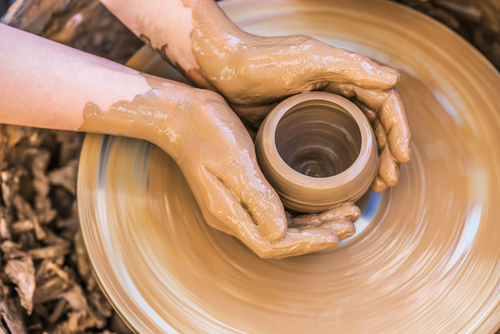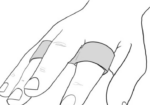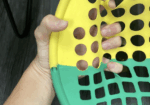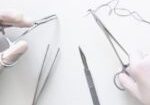It was early in my career, maybe a year out of school. I was working with a veteran physical therapist that had been practicing for thirty plus years. She was somewhat intimidating and one of those old school physical therapists that thrived on being aggressive. We were chatting about what areas of occupational hand therapy I was interested in. I told her I was interested in hand therapy.
She said to me, “why would you ever want to be a table-top therapist?”
That very question has followed me in my career and in some ways has driven me to make sure I am providing treatments that are centered around “occupation” and to ensure I am providing meaningful therapy.

I also have this amazing opportunity to work with several students from the local university where occupation is the center of their education. It is the foundation for occupational therapy and what makes us different from the other rehabilitative profession.
It is not only about treating occupation and a means to an end but also as the end. How can you possibly provide occupation-based treatment when you are concerned about the details of a tendon gliding 3-5 mm without rupturing but preventing scar adhesions. How can you make passive flexion exercises occupation based? How is this an occupation-based treatment? I think it is about keeping occupation at the core of the treatment.
As a simple illustration, I have provided a simple case study that is typical for our clinic.
A 26-year-old patient was helping some friends do some remodeling when her wrists went through a glass window. She lacerated every flexor tendon along with both her median and ulnar nerve. She is a young mother of three and unemployed. Her fiancé just got done serving 5 years of a prison sentence for armed robbery. Her two older children are in the custody of another family member and her youngest is living with her and the fiancé.
During the initial evaluation, my questions are centered around occupation. What does a typical day look like before the injury? What does it look like now that you have no use of your dominant hand? What are your current goals? What things do you need to be able to do now to get through the day?

Getting an understanding of the daily occupations, gives me insight into the patient’s life and how my treatments can not only prevent tendon ruptures but provide a meaningful treatment the patient can implement immediately. On the first visit, we did review edema management techniques along with a protected range of motion exercises. I was able to help her identify times she could implement these exercises based on what she told me during the initial evaluation. I was able to show her one-handed techniques (one handed techniques occupational therapy) to complete the ADLs that were crucial to making her day easier such as donning a bra, doing her daughters hair and doing simple meal preparation for her family.
Occupation in hand therapy can not only be used as a means to an end but also as a therapeutic agent throughout the intervention.
What are some other ways you can implement occupation-based treatment into hand therapy?
More To Read
Which orthosis design is better for zone 5-6 extensor tendon injuries, a relative motion orthosis compared to a dynamic extension orthosis?
M. Buhler, ˝ D. Gwynne-Jones, M. Chin et al., (2023) Are the outcomes of relative motion extension orthoses noninferior and cost-effective compared with dynamic extension orthoses for management of zones V-VI finger extensor tendon repairs: A randomizedcontrolledtrialJournalofHandTherapy. The Skinny: The aim of this study was to compare the data for two different types of orthoses…
Read MoreTop 5 DIP Flexion Exercises
By: Tori Rhodes Lately, we’ve had a handful of patients roll through our clinic with pretty significant limitations to DIP flexion. So, we’ve collected a selection of go-to exercises for these individuals. We’ve included a few of those here. From cat bites and fracture sites to mallet fingers and skin grafts, many individuals who are…
Read MoreWhat? I just received an order for suture removal…
How many of us have practiced suture removal in occupational or physical therapy school?? NOT I!! Often, hand surgeons will ask the therapist to remove sutures and sometimes the order will even say “remove sutures when ready” SO NOW WHAT? How to remove continuous sutures? First, we can cover the basics of sutures! There are…
Read MoreDo you know the secret ingredient to recovering from an injury?
Do you know the secret ingredient to recovering from an injury? I will give you a hint it is 5 letters and begins with the letter S. SLEEP Have you ever asked yourself a question – does sleep help injuries heal? This is for you to share with your patients but also serve as a…
Read MoreSign-up to Get Updates Straight to Your Inbox!
Sign up with us and we will send you regular blog posts on everything hand therapy, notices every time we upload new videos and tutorials, along with handout, protocols, and other useful information.






